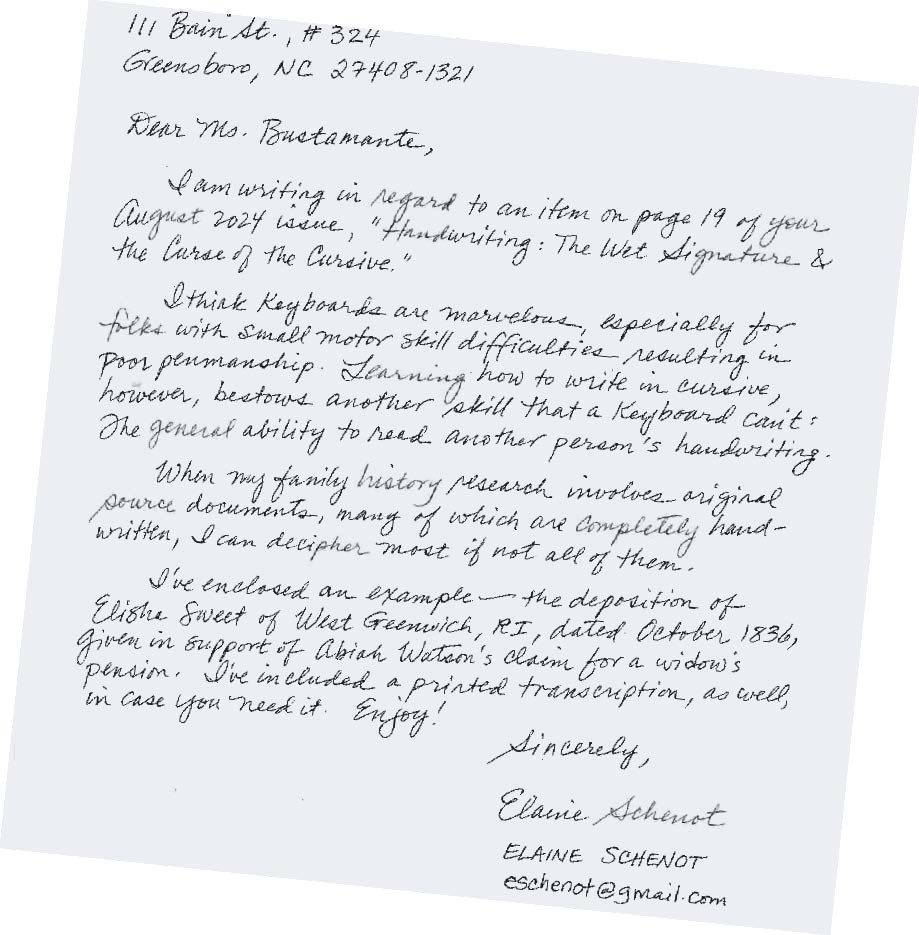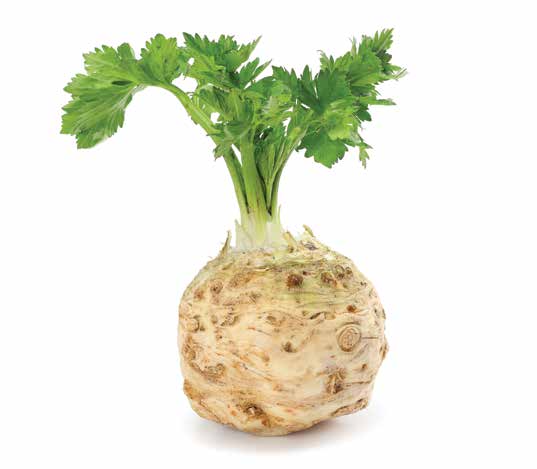SAZERAC

Letters
In response to our August 2024 Unsolicited Advice regarding handwriting, Elaine Schenot penned this letter:

Window on the Past
We’re not just blowing smoke out of the stacks, the O.Henry office has moved to Revolution Mill, seen here in the late-’40s.


Sage Gardener
Visiting my daughter in Spain, standing in a market surrounded by gloriously red peppers and the ripest of tomatoes, I suddenly saw “a dirty, knobby, alien-looking root,” as one food writer describes it: Apium graveolens var. rapaceum, aka celeriac. A cousin of celery, fennel, carrots and parsnips, this bulbous, bumpy orb is my wife’s absolute favorite root vegetable, although I’ve often pointed out to her that celeriac is not a root but a hypocotyl. She counters, “Say that three times.”
The hypocotyl, according to my dictionary, is that part of the stem beneath the stalks of the leaves and directly above the root. So, on that balmy Spanish evening we had hypocotyl remoulade, a classic French dish that Anne first discovered in a Paris automat. She chose what she thought was slaw; instead, she discovered something sublime. Since then, she’s been on a long journey — completely unsuccessful — of trying to grow celeriac. “One English gardener says ‘Celeriac is easy to grow,’” I tell her.“‘Hardier and more disease-resistant than celery.’” Says Anne, “You’ll recall that we’ve never been able to grow celery.”
Over the years, she’s told everyone who’ll listen about ordering the seeds and putting them into grow pots, only to have not a single one come up. The next year, she decided our wood stove-heated house was too cold, so she invested in a grow mat; voila, that spring she coached three spindly seedlings out of the pots! Nursed like the first borns they were, one of them survived transplanting. Thus, we harvested our treasured, first celeriac, a hypocotyl feast about the size of a black walnut. The following year was no better, so nowadays Anne resignedly buys them wherever she can get them, most reliably at Super G Mart on Market.
Among the oldest of “root” vegetables, celeriac was painstakingly cultivated, not for its stalks like celery, but for that unshapely, but oh-so-tasty bulb between the stem and the squiggly, anemic roots.
References date back to Mycenean Linear B. Homer mentions “selinon” (the Greek word for celeriac) in both the Iliad and Odyssey. Romans and Egyptians prized celeriac for its medicinal benefits, and one writer suggests the root was also used in religious ceremonies, though, for the life of me, I can’t imagine how. By 1623, the French, naturellement, were eating them. Soon, Europeans all over the continent were julienning, grating and slicing them. Americans, not so much.
Nevertheless, one of Martha Stewart’s acolytes proclaims that “celeriac is having a moment,” and points out that market forecasts for 2024 suggested a 42 percent increase in sales year to year. (No hoarding, please.) She quotes various celebrity chefs enthusing over the ugly bulb, celeriac puree in particular. If you like carrots, parsnips, fennel or turnips, especially combined with a comforting and slightly earthy note, you’ll likely like celeriac. Now that we’ve transitioned from our wood stove to central air, I’m hoping my favorite gardener will get out the grow mat, hatch a plethora of wee sprouts and nurse them into transplants that will, with any luck, grow into the ugliest vegetables in our garden — and on the planet. — David Claude Bailey
Winner, Winner, Chicken Dinner
Thank you to all who entered our 2024 O.Henry Essay Contest, with the theme, “Furry, Feathered and Ferocious.” We put out the call — of the wild — and your stories had us laughing, crying and snuggling with our own animals a little more tightly. With so many delightful entries, our task was beastly, but we’re pleased to have chosen three engaging essays that will appear in our pages throughout this year. Without further ado, your 2024 winners:
Second Place: Karen Watts, “The Mummification of Leapy the Lizard”
Third Place: Dianne Hayter, “Questers”
Thank you to all who entered our 2024 O.Henry Essay Contest, with the theme, “Furry, Feathered and Ferocious.” We put out the call — of the wild — and your stories had us laughing, crying and snuggling with our own animals a little more tightly. With so many delightful entries, our task was beastly, but we’re pleased to have chosen three engaging essays that will appear in our pages throughout this year. Without further ado, your 2024 winners:

Unsolicited Advice
A new year is a great opportunity to take stock of the many blessings in your life and let go of the things that aren’t serving you — yes, we’re talking about your refrigerator. That cranberry relish your dad brought over to pair with your Thanksgiving turkey during the Obama administration? Toss it. The high-protein yogurt you just bought to ring in 2025 as the best version of yourself ever? Keep it. At least for now, while you’re still full of hope. But those 17 jars of mustard alone? Pare ’em down. Here’s our list of the five essential mustards every house needs. The rest can go.
1. American yellow: She’s basic. Her fav shirt reads, “Go sports!” But she’s reliable and hasn’t met a hot dog she can’t improve.
2. Dijon: She rides around in limos and speaks with an elegant British accent. Her fav show is Bridgerton, but she’s also a fan of the 1995 Pride and Prejudice miniseries that starred Colin Firth. It’s unAmerican not to use Grey Poupon, si’l vous plaît.
3. Whole grain: This one screams, “I’ve got grit,” and hangs out in your local deli with Kosher pickles. She’s too hardworking to care if there’s anything stuck in her teeth.
4. Honey: She’s sweet and tangy. When invited to a potluck dinner, she brings warm, gooey sticky buns.
5. Spicy brown: She’s the Spice Girl (Mustard Spice, duh) that was cut from the group for being too bold and standing out. Sadly, her solo career went nowhere because she’s better when mixed with others.
